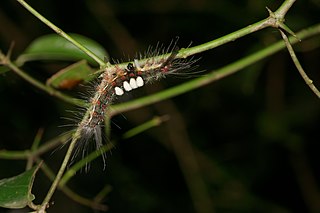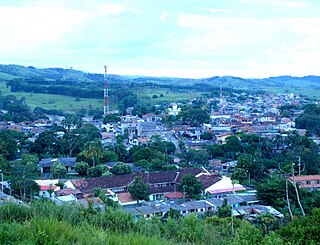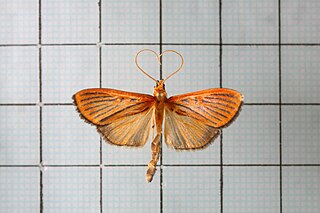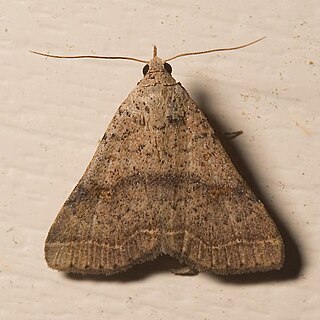
Coca-Cola, or Coke, is a carbonated soft drink manufactured by The Coca-Cola Company. Originally marketed as a temperance drink and intended as a patent medicine, it was invented in the late 19th century by John Stith Pemberton and was bought out by businessman Asa Griggs Candler, whose marketing tactics led Coca-Cola to its dominance of the world soft-drink market throughout the 20th century. The drink's name refers to two of its original ingredients: coca leaves, and kola nuts. The current formula of Coca-Cola remains a trade secret; however, a variety of reported recipes and experimental recreations have been published.

Coca is any of the four cultivated plants in the family Erythroxylaceae, native to western South America. Coca is known for its psychoactive alkaloid, cocaine.

Coca eradication is a strategy promoted by the United States government starting in 1961 as part of its "War on Drugs" to eliminate the cultivation of coca, a plant whose leaves are not only traditionally used by indigenous cultures but also, in modern society, in the manufacture of cocaine. The strategy was adopted in place of running educational campaigns against drug usage. The prohibitionist strategy is being pursued in the coca-growing regions of Colombia, Peru, and formerly Bolivia, where it is highly controversial because of its environmental, health and socioeconomic impact. Furthermore, indigenous cultures living in the Altiplano, such as the Aymaras, use the coca leaf in many of their cultural traditions, notably for its medicinal qualities in alleviating the feeling of hunger, fatigue and headaches symptomatic of altitude sicknesses. The growers of coca are named Cocaleros and part of the coca production for traditional use is legal in Peru, Bolivia and Chile.

Plan Colombia was a United States foreign aid, military aid, and diplomatic initiative aimed at combating Colombian drug cartels and left-wing insurgent groups in Colombia. The plan was originally conceived in 1999 by the administrations of Colombian President Andrés Pastrana and U.S. President Bill Clinton, and signed into law by the United States in 2000.

Erythroxylum coca is one of two species of cultivated coca.

The Lymantriinae are a subfamily of moths of the family Erebidae. The taxon was erected by George Hampson in 1893.

The Páez people, also known as the Nasa, are a Native American people who live in the southwestern highlands of Colombia, especially in the Cauca Department, but also the Caquetá Department lowlands and Tierradentro.

Taraza is a town and municipality in the Bajo Cauca subregion of Antioquia Department, Colombia. It lies 222 kilometres (138 mi) from the city of Medellín, the departmental capital, and has a land area of 1,569 square kilometres (606 sq mi). The municipality was separated from the municipality of Cáceres in 1979.

Cocaleros are the coca leaf growers of Peru and Bolivia. In response to U.S.-funded attempts to eradicate and fumigate coca crops in the Chapare region of Bolivia, cocaleros joined with other grassroots indigenous organizations in the country, such as unionized mine workers and peasants to contest the government. Evo Morales, who became president of Bolivia in 2006, was a leader of the cocalero movement in that country.
In 2012, coca production in Colombia amounted to 0.2% of Colombia's overall GDP and 3% of Colombia's GDP related to the agricultural sector. The great majority of coca cultivation takes place in the departments of Putumayo, Caquetá, Meta, Guaviare, Nariño, Antioquia, and Vichada.

Sameodes is a genus of moths of the family Crambidae described by Snellen in 1880.

Tyspanodes is a genus of moths of the family Crambidae described by William Warren in 1891.

Bleptina is a genus of litter moths of the family Erebidae. It was erected by Achille Guenée in 1854.
Metallata is a genus of moths in the family Erebidae. The genus was described by Möschler in 1890.

Prosoparia is a genus of moths of the family Erebidae. The genus was erected by Augustus Radcliffe Grote in 1883.
Blazia is a monotypic moth genus in the subfamily Lymantriinae described by Schaus in 1927. Its only species, Blazia lixivia, was first described by Paul Dognin in 1923. It is found in Bolivia.
Eloria is a genus of moths in the subfamily Lymantriinae. The genus was erected by Francis Walker in 1855.

Thagona is a genus of moths in the subfamily Lymantriinae. The genus was described by Möschler in 1883.
William Schaus was an American entomologist who became known for his major contribution to the knowledge and description of new species of the Neotropical Lepidoptera.

Eloria diaphana is a moth of the subfamily Lymantriinae first described by Stoll in 1781. It is found in Suriname.














